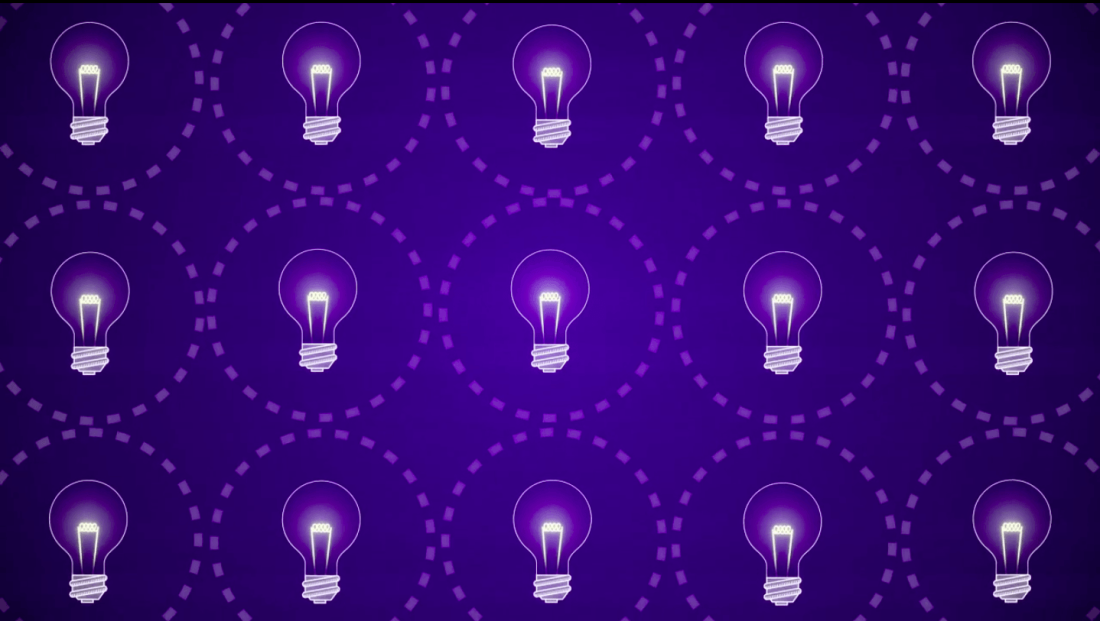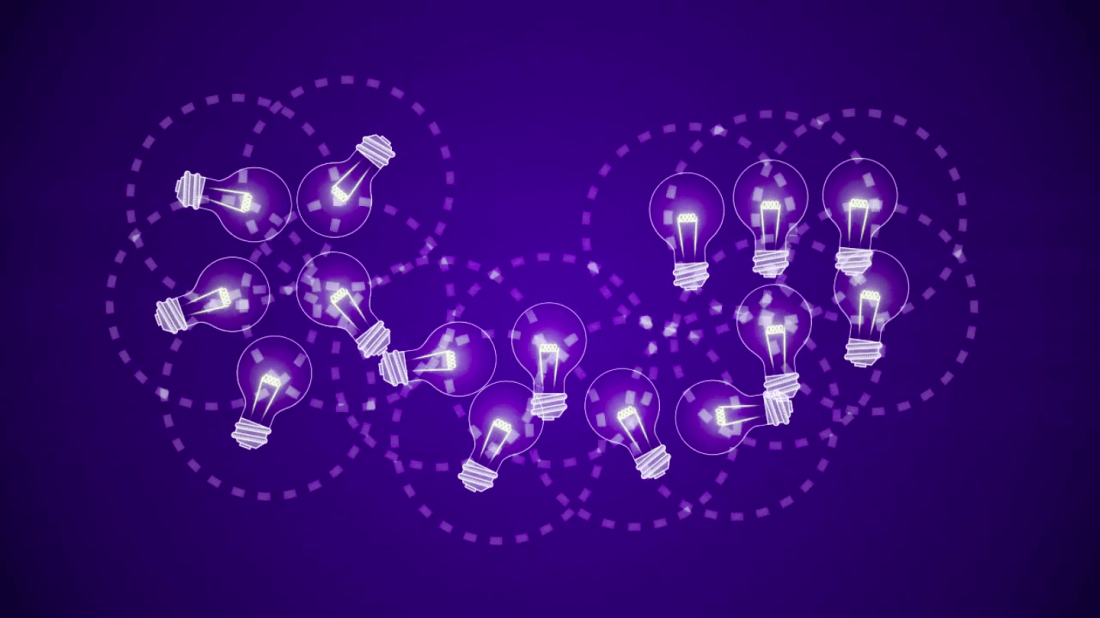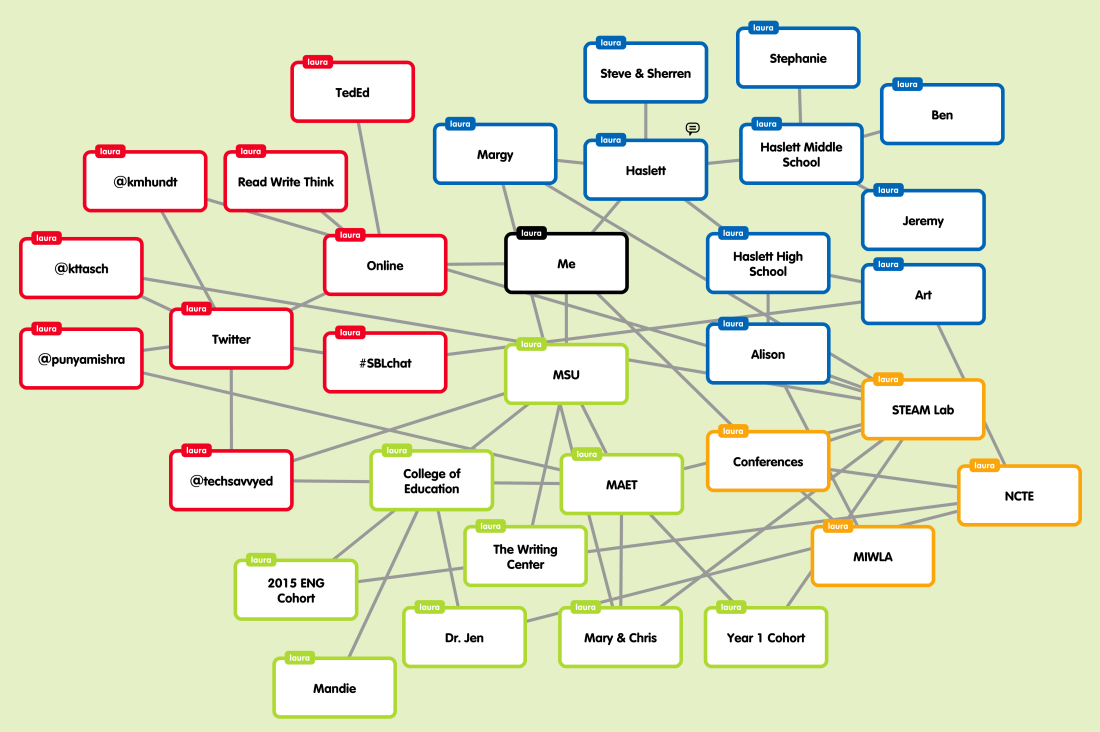“I think the first step is that educators have to reexamine their own learning practice and move toward becoming more networked and connected themselves” (Richardson 2013).
In Ferguson’s video series, Everything is a Remix, he discusses the history of copyright and patents, explaining how their original purpose was to create a rich pool of public knowledge for furthering learning and innovation. Over time, however, copyrighting and patenting became ways to claim ownership over one’s ideas. Essentially, when you think of a great idea, it’s considered your intellectual property that you can protect from others by applying for copyrights and patents.
To help illustrate intellectual property, here’s an image from Ferguson’s video Everything is a Remix Part 4:

This image is an accurate representation of how intellectual property works, but more importantly, it represents how our current society perceives ideas. Society treats every idea as a separate entity, not dependent upon past ideas and not used as a springboard for future ones. According to intellectual property, my idea is mine — only mine.
Ferguson (2012) argues this right to own ideas can make people territorial: because we can own intellectual property, we don’t want anyone else taking it away from us. To prove this point, Ferguson refers to inventors like Steve Jobs, the creator of Apple, who admitted to using others’ ideas as foundations for his products. Yet when others used his ideas as the basis for their products, he attacked them. Still, Jobs arguably has the right to attack them because our society treats intellectual property as a commodity.
To me, the heart of the problem is that the rules of intellectual property — what’s mine is mine and what’s yours is yours — don’t accurately reflect the way ideas are formed. To patent an idea suggests that the idea is completely isolated, independent of any minds besides your own. But is that how it really works?
Here’s where remixing comes in. Remixing is the act of combining others’ ideas in a new way. In reality, remixing is how most great ideas are formed. Great ideas are rarely isolated. They are founded upon previous ideas, remixing those ideas to create something truly brilliant.
Ferguson gives the examples of Johann Gutenberg’s printing press and Henry Ford’s Model-T in his video Everything is a Remix Part 3:


Both of these men created inventions that revolutionized society, but their brilliance was not a standalone entity. Their brilliance was rooted in the minds of others who came before them. Yet we don’t vilify Gutenberg or Ford for remixing others’ ideas; we celebrate these men for changing the world.
Again, the problem with intellectual property is that it falsely represents how ideas are formed. That’s why I prefer this second image of the lightbulbs from Ferguson’s video Everything is a Remix Part 4:

Sure, this image isn’t as clean and orderly as the first one. The lines around these lightbulbs overlap, connect, and break apart. It’s messy, but so is thinking, learning, making, teaching, and essentially anything else worthwhile.
The process of discovering new ideas isn’t like living in a suburb with fenced-in yards; it’s more like living in the dorms with common areas, a cafeteria, and a shared bathroom.
Messy? Yes. Fun? Yes. Frustrating? You bet.
But those messy areas where we bump into each other and engage with each other — those are the spaces where ideas go further.
To create and innovate, we need each other. Just like the innovators before us, we need people to challenge our ways of thinking. Ideas become better not by keeping them hidden behind a 6-foot privacy fence, but by bumping into each other in the cafeteria and eating some late night pizza. That’s where the magic happens.
So why does all of this matter? Let me show you my Personal Learning Network (PLN). My PLN is my group of people and resources that support, challenge, and guide me. Here’s a map of my PLN (my PLN is constantly growing, so this map will always be incomplete — that’s the beauty of it):

So now I ask this question: what would happen to my PLN if we viewed our ideas as intellectual property to protect and defend? Think about the lightbulbs. My current PLN map looks like the overlapping lights that work together, but if we started to feel territorial over our ideas, my PLN map might look more like this:

Does anyone benefit here? Can we change education if we never talk? Richardson (2013), when discussing ways to improve education, says, “I think the first step is that educators have to reexamine their own learning practice and move toward becoming more networked and connected themselves.” We won’t become better teachers by isolating ourselves; we need to connect.
I’ve needed my PLN more times than I can count. I’ve relied on the kindness of a coworker when the copier jammed for the 12th time before first hour. I’ve rushed to my mentor teacher’s room after school when I felt like my crazy 6th hour might be the end of me. I’ve grieved with my team teachers when we lost a student to suicide.
In moments like these, I believe we’re better off together because we can learn from each other. Collectively, we have far more knowledge and experience than any of us have on our own. In fact, one of us might have the idea that sparks someone else’s idea to change the world as we know it.
Today, I can’t say when I’ll come up with a great idea, or when I might come up with an idea that helps you with your great idea. I can’t say what my contribution to the world will be or when it will happen.
Today, I can say this: what’s mine is ours.
Personally, I liked living in the dorms.
References
Ferguson, K. (2011, June 20). Everything is a Remix Part 3 [Video file]. Retrieved from https://vimeo.com/25380454
Ferguson, K. (2012, February 16). Everything is a Remix Part 4 [Video file]. Retrieved from https://vimeo.com/36881035
Richardson, W. (2013, February 17). Why School? TED ebook author rethinks education when information is everywhere. Retrieved July 20, 2017, from http://blog.ted.com/why-school-ted-ebook-author-rethinks-education-when-information-is-everywhere/
If not stated otherwise, all images taken by Laura Allen.